Day 13
Even more packed than the others, with an extensive program. We were lucky with parking spots all day, which was a significant time-saving factor.
After spending the night in a house completely for ourselves, we arrived in Viseu—a rather large city with beautiful fountains. The city’s cathedral, built in the 17th century in a Romanesque style, is today almost entirely Baroque. Opposite the cathedral stands the Church of Misericórdia, forming an ensemble that is striking in its contrasts. We strolled through the former Jewish quarter—which bears no trace of its Jewish past—paying our respects to what was there.


The next city, Garda (Garda), the highest city in Portugal, proved uninteresting, neglected, and had a population to match. Still, it can boast of an imposant medieval cathedral, gothic with Manuelino additions, and XII – XIV centures castle.

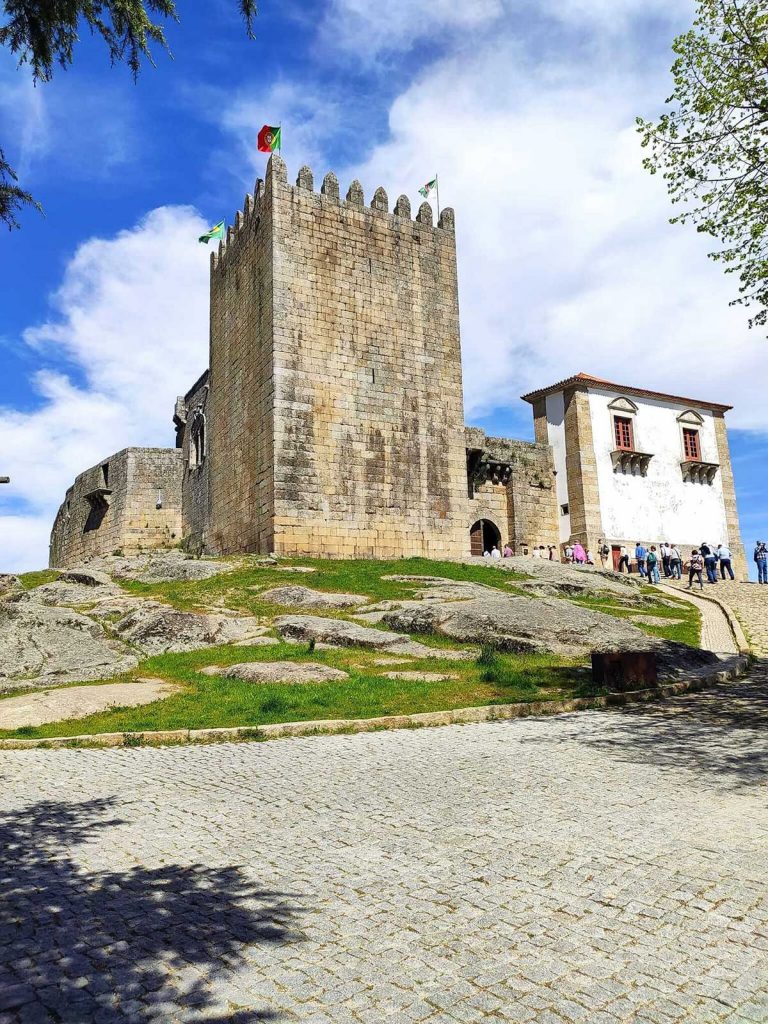


After Garda came Belmonte, the town of the baptized Jews who for centuries secretly remained faithful to the religion of their ancestors. They were discovered in the 1920s by a Polish Jew who had fled to Portugal after the outbreak of World War I, and in 1994 a rabbi arriving from Israel officially brought them back into the fold of Judaism. Today the town has a synagogue and a Jewish museum, and several houses bear plaques recounting their former Jewish inhabitants.

From Belmonte, we went to the town of Covilhã to see the Church of St. Mary, whose entire façade is covered in azulejos. A delay in Covilhã—built on a mountainside with narrow streets that made progress difficult—meant it was too late to visit the kosher cheese shop in the village of Peraboa, which also features a cheese museum and offers guided tours.


The day ended with a grand finale: we spent the evening in Monsanto, the village perched on a steep slope amid giant granite boulders, where the stones sometimes form part of the house walls. We climbed almost to the very summit, marveling at the wonders of nature. Tomorrow is a long drive to Lisbon.





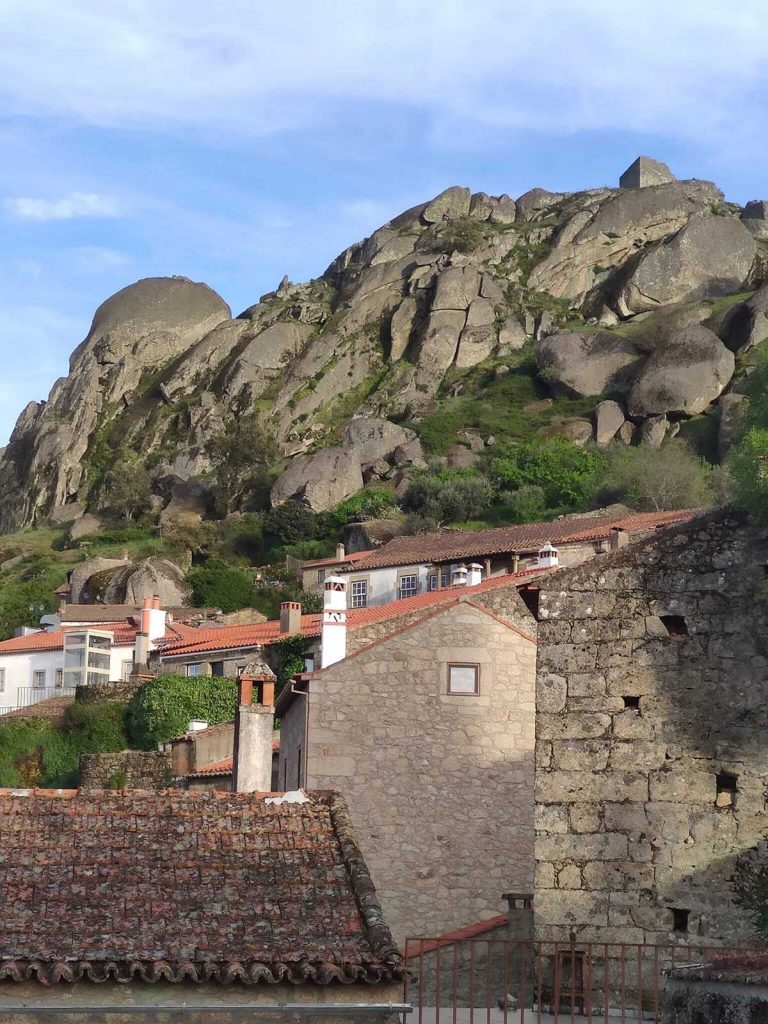
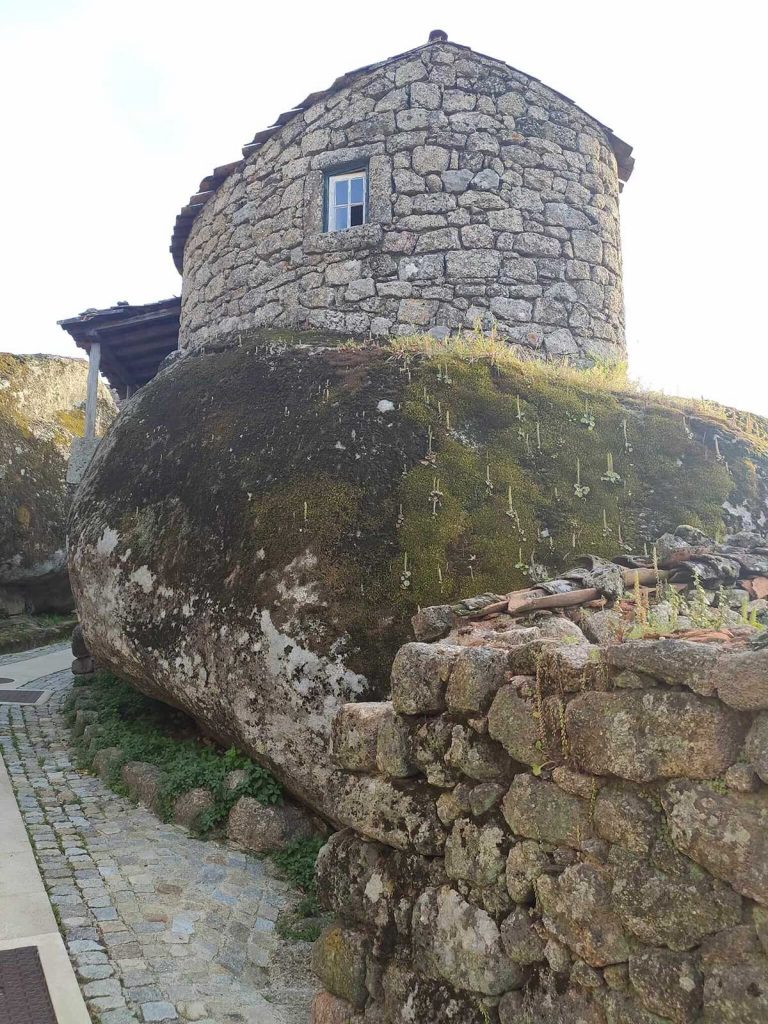
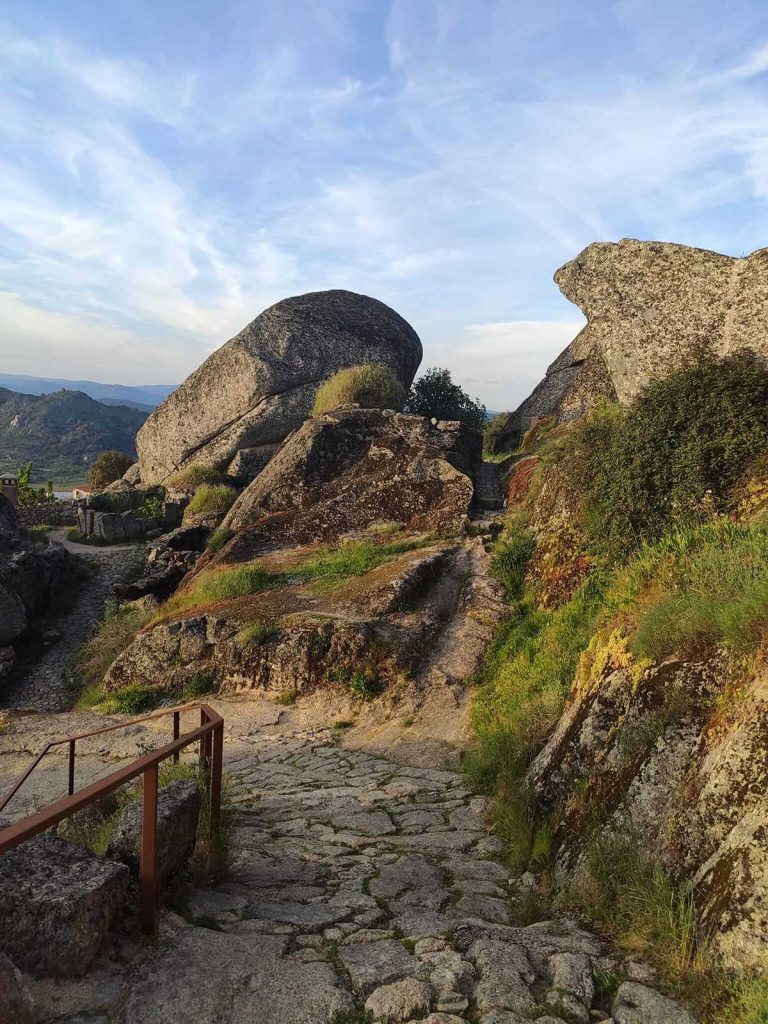


Day 14
The last day on the road. We broke up the long drive to Lisbon with two stops. The first was Castelo Branco. We came here to see the Bishop’s Palace park, one of the most beautiful Baroque gardens in Portugal.
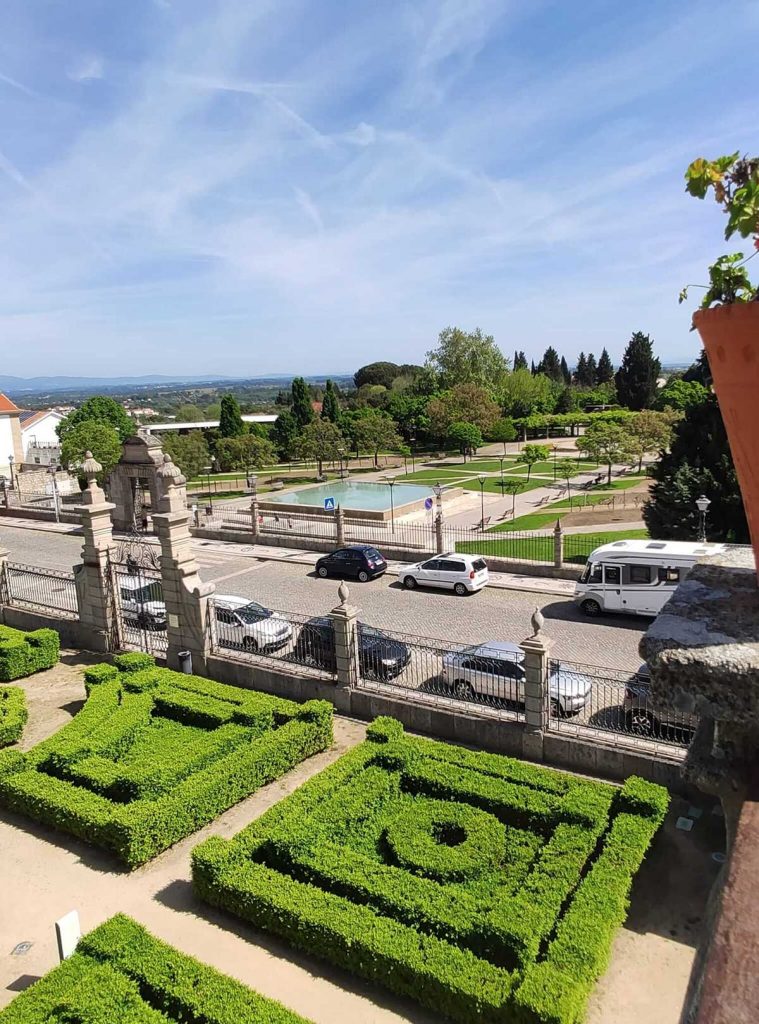

The pathways are lined with clipped hedges and the park’s staircases and terraces are decorated with allegorical figures of the seasons, months, zodiac signs, and the five parts of the world, as well as statues of Portuguese kings bearing their nicknames: the Eloquent, the Conquistador, the Fat, etc., and the queen, of course, the Beautiful.

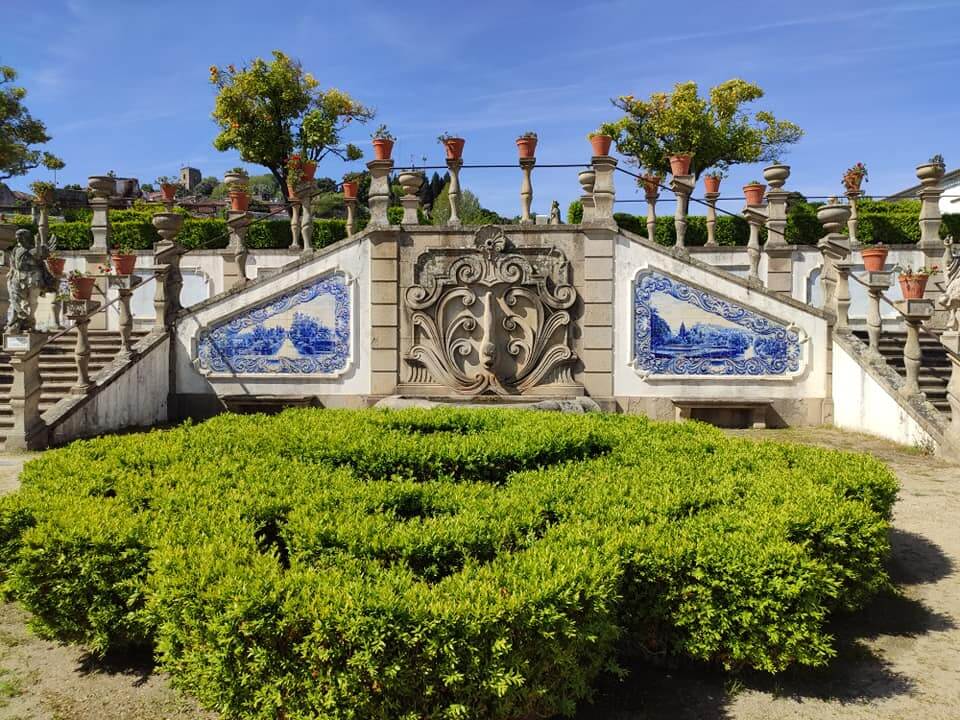

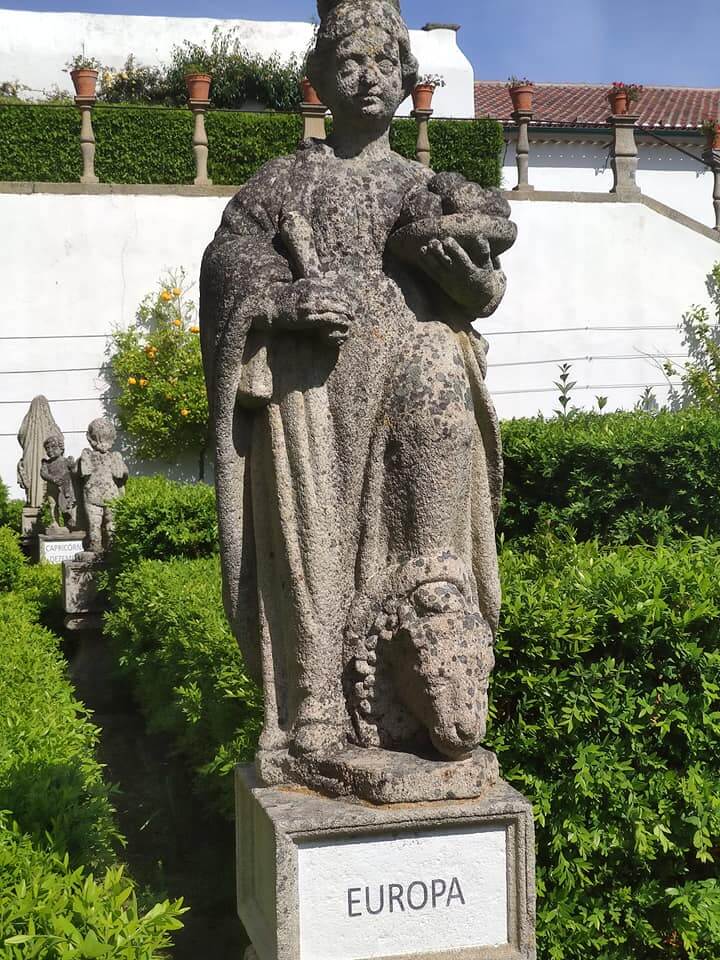
The large pool with a statue of Moses holding the Tablets of the Covenant is very impressive. In the former Bishop’s Palace there is now the museum of religious art, archaeology, and textiles, featuring a large collection of chasubles—silk-embroidered vestments.
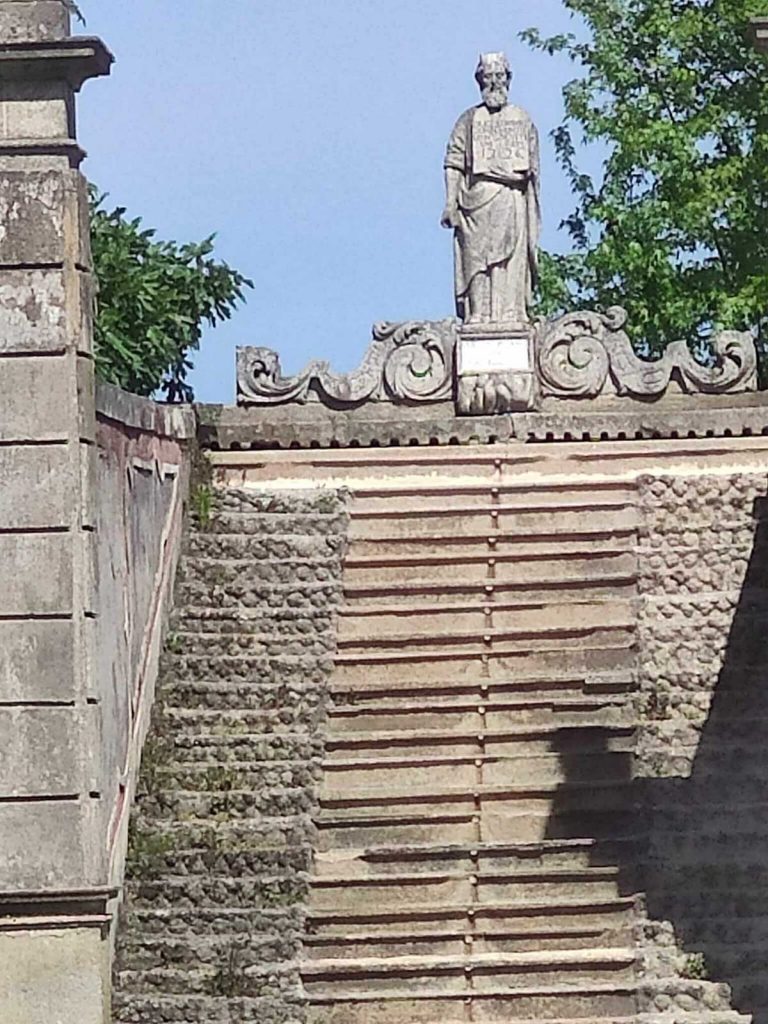

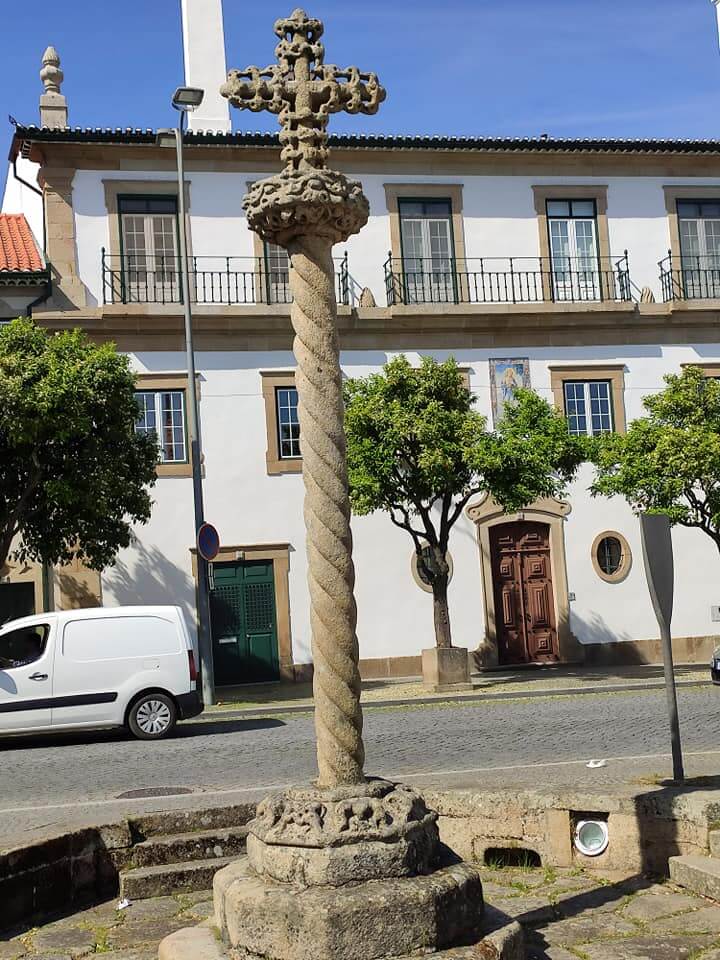
The second stop was in Santarém with its rather unremarkable cathedral (but with a nicely painted ceiling), a covered market richly decorated with azulejos, and a spring above which in the 13th century was erected something akin to a miniature Gothic castle with battlements and walls. But for us the city’s main attraction proved to be an Indian restaurant, where we thoroughly satisfied the appetite that had well and truly set in by then.
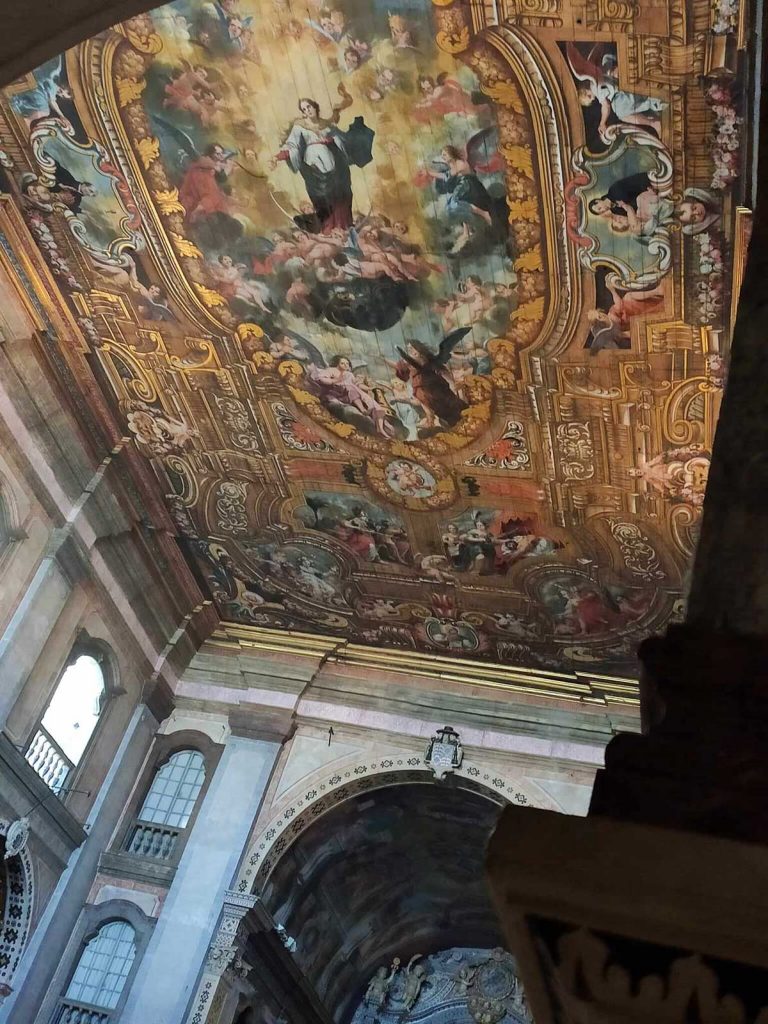

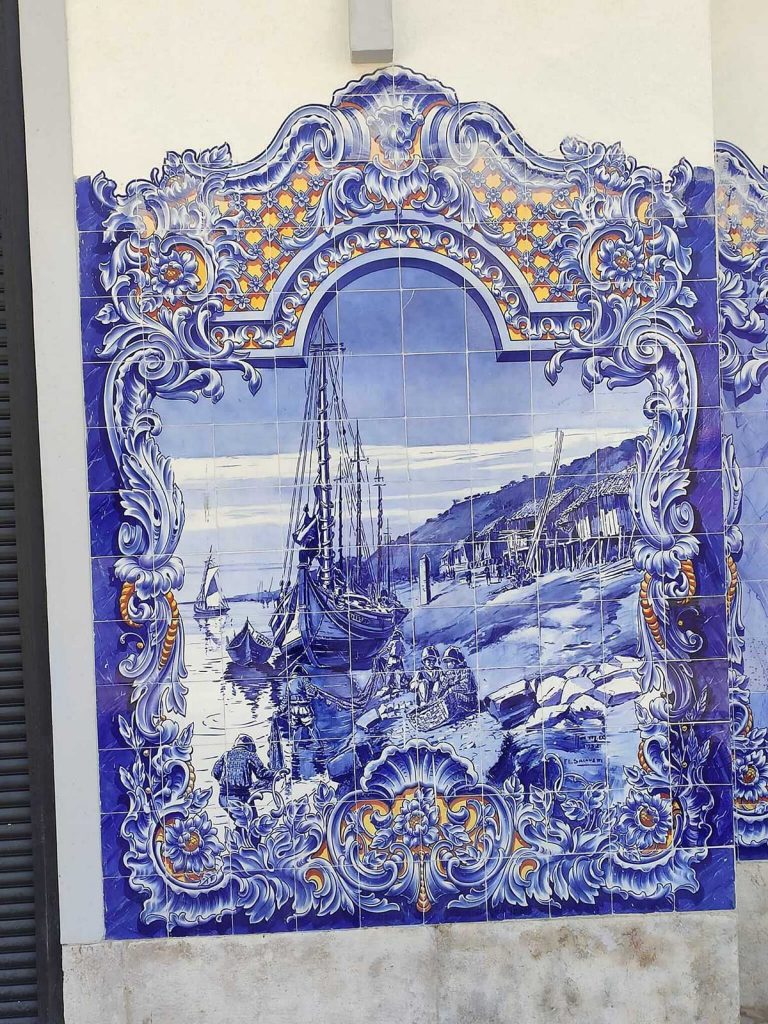

In Lisbon, we headed straight to the Gulbenkian Museum. Not realizing that the museum has an underground parking garage for visitors, we parked on the little street opposite the museum. It worked out. We only had time for the European art galleries, which has two Rembrandts and numerous Impressionist works, and for the large collection of jewelry (in the Art Nouveau style, of incredible beauty) by René Lalique, the jeweler and glass artist who was Gulbenkian’s friend.
After the museum, we went to the popular café-pastry shop “Versailles”, located about a kilometer away. We’ve seen more beauiful interiors and ate tastier pastries, but the café is housed in an outstanding Art Nouveau building, which is what drew us there.

It turned out that the entire neighborhood was dotted with dozens of buildings in the style we love so much, and of course we made a lot of photos. After dropping our things off at the rented apartment, we headed to the airport to return the car. After circling the airport for almost an hour, we still couldn’t find the return spot. I asked an airport employee for help; he hopped into our car, and three minutes later we were there. We arrived at our lodging utterly exhausted. Tomorrow—our date with the beautiful city of Lisbon.


Days 15-16
Our first day in Lisbon we began by visiting the Palace of the Marquis of Fronteira, located in the Benfica suburb. The palace was built in 1675 by Count Mascarenhas as a country house, but after the family’s city mansion was destroyed in the 1775 earthquake, they took up permanent residence in the palace.
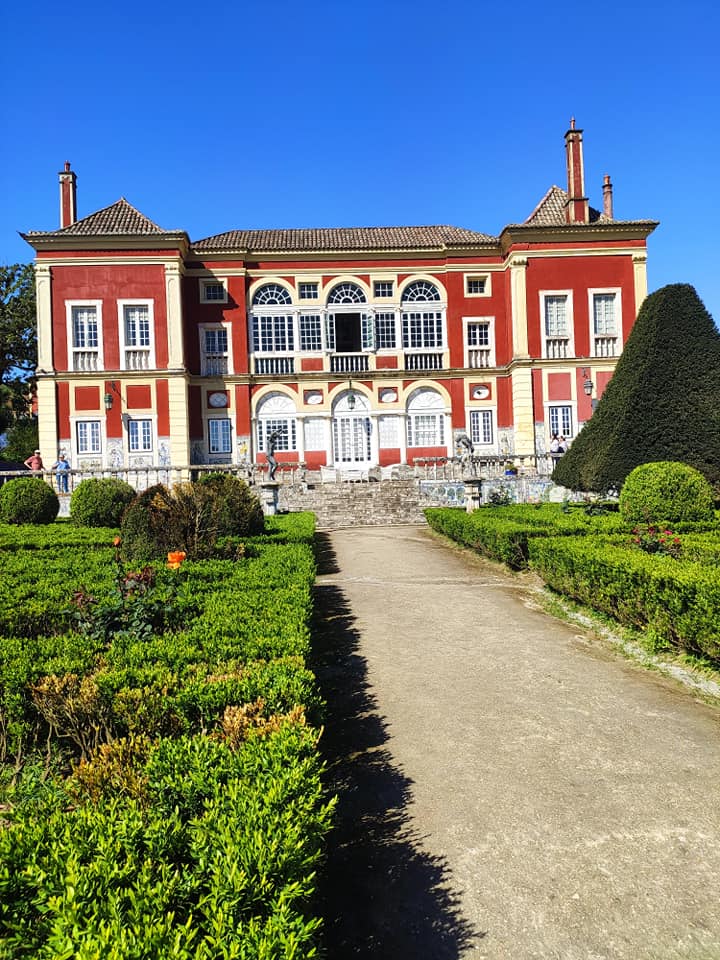
Count Mascarenhas was a hero of the 1640 War of the Restoration (Guerra da Restauração) and, for his military merits, was granted the title Marquis of Fronteira. The palace and its gardens are adorned with beautiful frescoes and Portuguese and Dutch azulejos, which drew us here. Wishing to immortalize his martial exploits, the marquis decorated one of the palace’s rooms with unique azulejos depicting battles in which he took part, complete with hundreds of tiny warrior figures (and not without humor: one scene shows a soldier squatting off to the side with his trousers down).
Today the 14th Marquis of Fronteira resides in the palace with his family and, in addition to guided tours, rents out the state rooms for weddings and other events. Entrance in guided groups is every half hour from 9:30 AM to 5:00 PM (until 1:00 PM on Saturdays; closed on Sundays). Admission to the palace and gardens is €15; gardens only €6. Unfortunately, photography is not allowed inside.
From the Jardim Zoológico metro station, one can get to the palace using bus 770 (or it’s a 1.2 km walk). After touring the palace, we headed to Marquês de Pombal Square, from where we set off on the traditional route: strolling down Avenida da Liberdade, the city’s main and most beautiful avenue; through the squares of the Lower Town—Baixa; climbing up to the Miradouro Sta. Luzia viewpoint (bus 737 from Praça da Figueira or about a kilometer on foot); descending to the twin-towered Romanesque cathedral; then to the House of Spikes (Casa dos Bicos, Rua dos Bacalhoeiros), which I liked less than its counterpart in Salamanca; and finally—the grand finale—to the majestic Praça do Comércio, overlooking the widely flowing Tagus River (known in Spanish as the Tajo, on which Toledo stands).
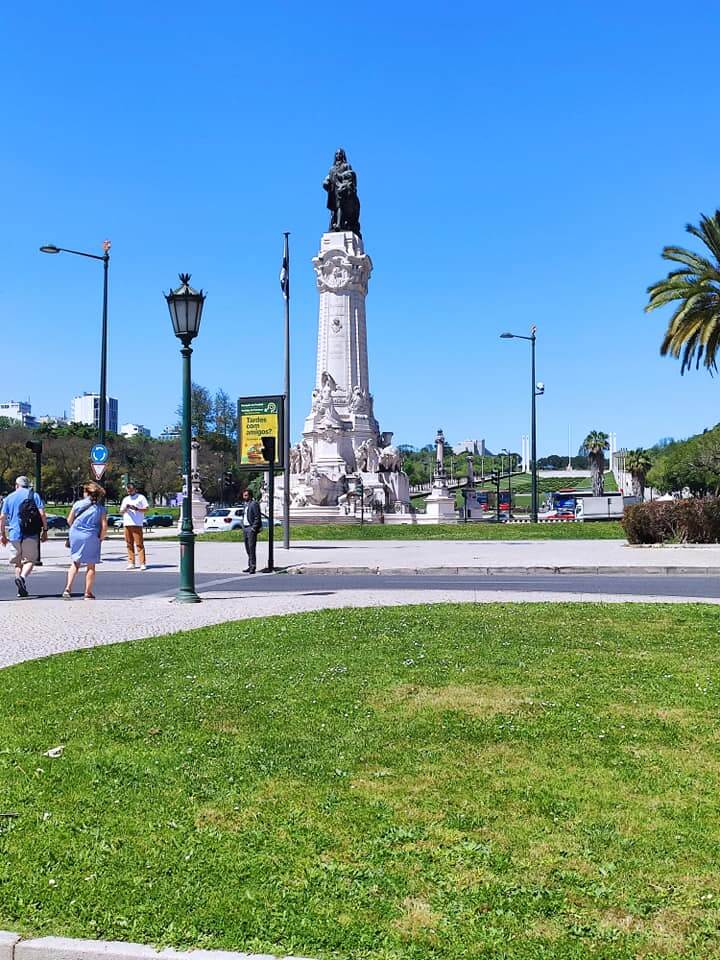

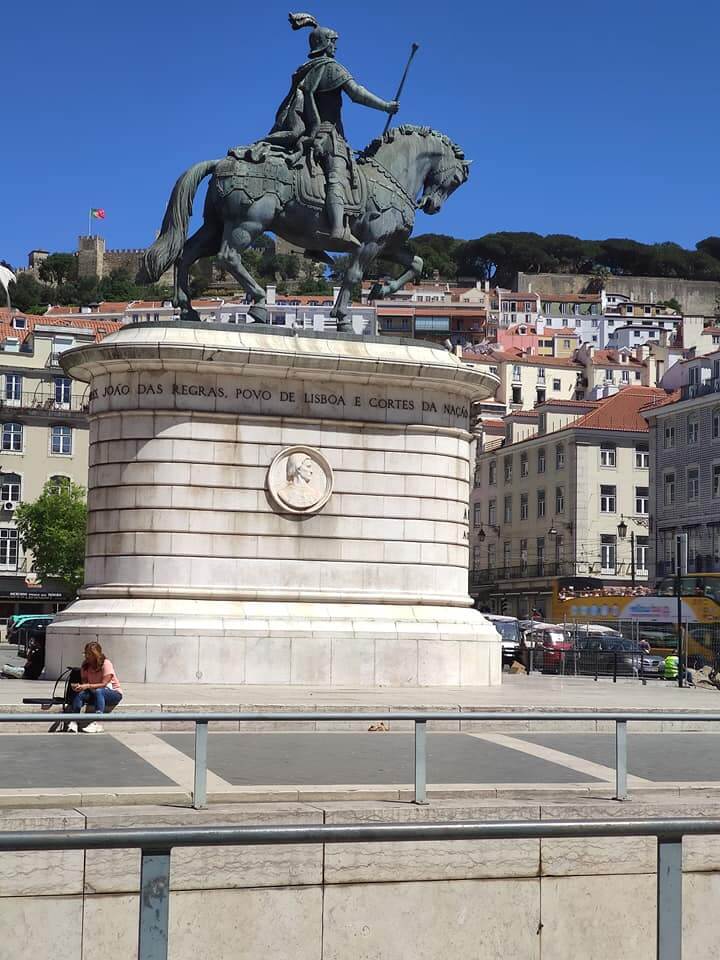

After that we took the Elevador de Santa Justa up to the Upper Town (Bairro Alto), looked out over the city from above (I could do it for hours), wandered around there, and then the ever-present Uber brought us home.
By the way, about Uber: we were glad that most of the time we used this mode of transport. For short and medium distances, its cost for two of us is only slightly higher than other options, while saving a great deal of time and effort.
The second day began badly. We wanted to visit the Shaarei Tikvah synagogue (R. Alexandre Herculano 59), which is only open on Tuesdays and Thursdays by appointment. The phone number we found online went unanswered, but we decided to try our luck anyway. When we arrived, we saw a group of American Jews who had sent a fax in advance and, having received no response, had come nonetheless.
The lady attendant brusquely turned us all away and slammed the door in our faces. The phone number listed on the sign by the entrance also didn’t answer. Neither we nor the others gathered there had ever, anywhere in the world, encountered such rude treatment of Jews wanting to visit a synagogue .
After that, we stowed our suitcases at the Sintra train station and set off on quite a long journey to see the garden Quinta dos Azulejos that we’d discovered in the depth of the internet. A taxi would have been expensive, so we first took the metro to the nearest station (Lumiar, Yellow Line) and then took an Uber from there.
In this garden, azulejos cover the columns, walls, benches, and virtually everything. It’s fascinating, but unfortunately they’re in a dire state. The garden belongs to a small private school and is likely doomed. Many of the panels are already badly damaged. Entrance is free from 9:00 to 16:00. When calling a taxi, be sure to give the school’s name (Colégio Manuel Bernardes) rather than the garden’s address; otherwise, as we did, you’ll end up in the wrong place.







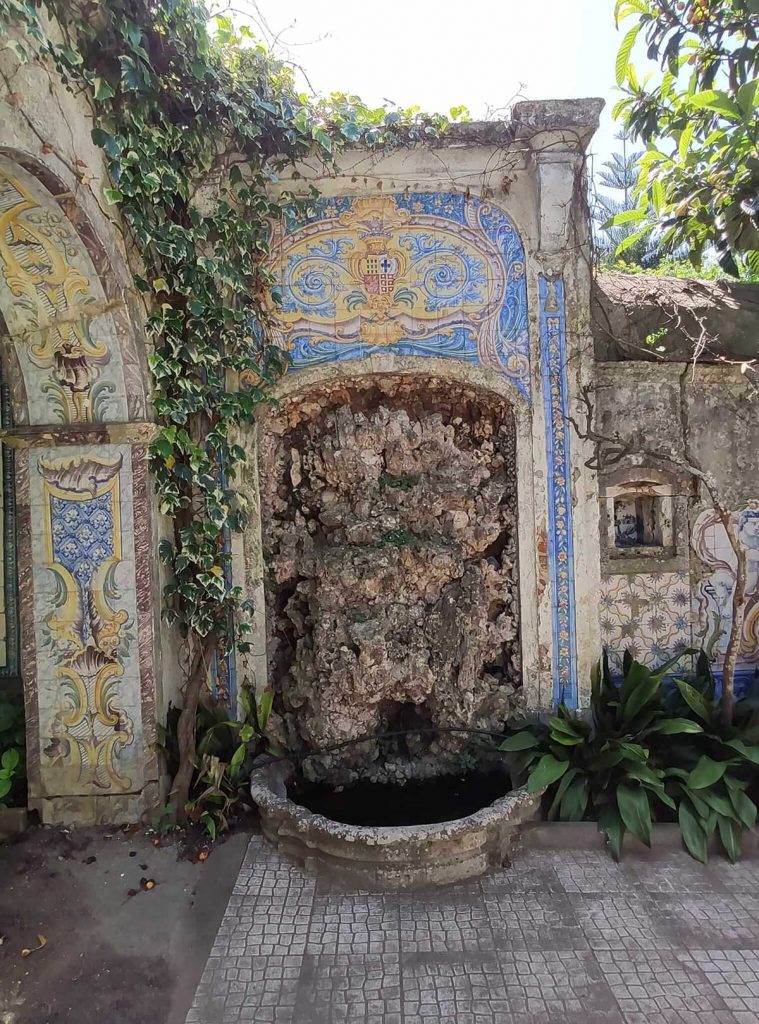






From the garden, we made our way—not without adventure (that day every form of transport seemed to elude us, leaving us ultimately short on time for the Azulejo Museum on Rua da Madre de Deus 41, 100-135, one of our main objectives)—to the Belém (Bethlehem) district to see the city’s, if not the country’s, foremost attraction: the Monastery of Jerónimos, the pinnacle of the Manueline style.
And here I fall silent. To those who have seen it, I would add nothing; to those who have not, my meager powers would be insufficient to convey the full splendour of this place. I will only say that in this district, beyond the monastery, there are many other fascinating sites: the Coach Museum, the Archaeological Museum, the Monument to the Discoveries, and the Belém Tower—enough to fill at least half a day.

And we, having returned to the station, quenched our thirst one last time with Portuguese beer and grabbed a bite to eat to the cheerful music of street musicians on a street decorated with colorful umbrellas. Our young waitress, upon learning that we were from Israel, exclaimed, “How wonderful! I’m Jewish too! I wear חי! I have relatives in Be’er Sheva.” It turned out that her mother was from Ukraine. Having emigrated to Spain, she married a Portuguese man there.
Our suitcases have been taken from the hold (payment by coins only), Uber has been called and is whisking us to the airport. Farewell, Portugal, and thank you: we’ve had a wonderful time here.

